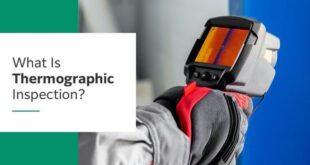Maximizing Quality: Comprehensive Guide Thermographic Testing for Welded Joints Thermographic Testing operates on the principle of detecting temperature variations. It utilizes an infrared camera to capture the heat patterns emitted by the surface of the welded joint. The underlying idea is simple: flaws or defects often generate distinct thermal signatures. …
Read More »Do You Know about Exothermic Welding?
Do You Know about Exothermic Welding? Introduction Exothermic welding, also known as thermite welding or aluminothermic welding, is a process that creates a permanent electrical connection between metal conductors using a chemical reaction. It involves the controlled reaction of a powdered mixture, typically containing metal oxides and powdered metals, which …
Read More »Magnetic Particle Inspection – NDT Inspection
Magnetic Particle Inspection – NDT Inspection Introduction Magnetic Particle Inspection (MPI) is a non-destructive testing (NDT) technique used to detect surface and subsurface defects in ferromagnetic materials. This method utilizes the magnetic properties of materials to identify defects that are not visible to the naked eye. MPI is commonly used …
Read More »NDT Non-Destructive Testing
NDT Non-Destructive Testing Introduction Non-Destructive Testing (NDT) is a group of techniques used in science and industry to evaluate the properties of a material, component or system without causing any damage to it. This means that the inspection process does not alter or affect the material or component in any …
Read More »The Challenges of Metal Identification in Welding: How to Overcome Them
The Challenges of Metal Identification in Welding: How to Overcome Them Introduction Metal identification is a crucial aspect of welding that is often overlooked, yet it is a fundamental step in ensuring the success of any welding project. Identifying the type of metal being welded is essential to determine the …
Read More » Welding of Welders All about Welding and Welders
Welding of Welders All about Welding and Welders




